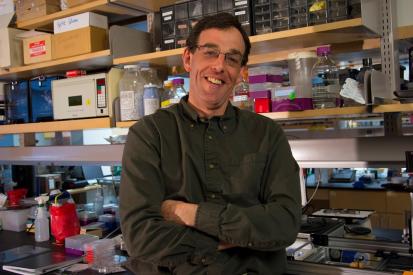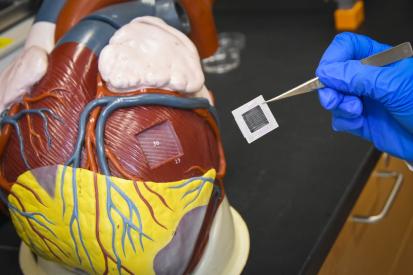The overall objective of my research is to create bioengineered scaffolds to enhance the regeneration of damaged tissues and organs. Specifically, my laboratory uses biomimetic design strategies and novel fabrication processes to develop three-dimensional constructs that emulate native tissue architecture and cellular microenvironments. We use these scaffolds to characterize the roles of extracellular matrix (ECM) cues and topographic features in modulating cellular functions, including adhesion, migration, proliferation, differentiation, and tissue remodeling. For example, we are investigating the design of microfabricated basement membrane structures to direct keratinocyte function and enhance the performance of bioengineered skin substitutes. We are also designing novel biopolymer microthreads that are being used to deliver stem cells and to facilitate myocardial or skeletal muscle regeneration. These scaffolds have been used, as well, to develop in vitro model systems to predict cellular and tissue responses to implantable biomaterials for the repair of soft tissues including tendon and ligament.
In the classroom, I enjoy teaching students about the fundamentals of biomaterials science and cell-biomaterial interactions to design implantable biomaterials that promote functional tissue restoration. I particularly enjoying working with teams of students on capstone design projects to develop biomaterials scaffolds and benchtop assays to characterize cell-biomaterial interactions that can be used to solve clinical problems related to wound healing and tissue regeneration. At the graduate level, I enjoy mentoring master’s and doctoral students; helping them develop into independent scientists and engineers who will contribute to solutions of various healthcare problems.
Scholarly Work
Conjugation of extracellular matrix proteins to basal lamina analogs enhances keratinocyte attachment. Bush KA, Downing BR, Walsh SE, Pins GD. J Biomed Mater Res A. 2007 Feb;80(2):444-52. PMID: 17013864
Multiphoton excited fabricated nano and micro patterned extracellular matrix proteins direct cellular morphology. Pins GD, Bush KA, Cunningham LP, Campagnola PJ. J Biomed Mater Res A. 2006 Jul;78(1):194-204. PMID: 16637027
In vitro comparison of wire and plate fixation for midline sternotomies. Pai S, Gunja NJ, Dupak EL, McMahon NL, Roth TP, Lalikos JF, Dunn RM, Francalancia N, Pins GD, Billiar KL. Ann Thorac Surg. 2005 Sep;80(3):962-8. PMID: 16122464
Multiphoton excited fabrication of collagen matrixes cross-linked by a modified benzophenone dimer: bioactivity and enzymatic degradation. Basu S, Cunningham LP, Pins GD, Bush KA, Taboada R, Howell AR, Wang J, Campagnola PJ. Biomacromolecules. 2005 May-Jun;6(3):1465-74. PMID: 15877366
The influence of microtextured basal lamina analog topography on keratinocyte function and epidermal organization. Downing BR, Cornwell K, Toner M, Pins GD. J Biomed Mater Res A. 2005 Jan 1;72(1):47-56. PMID: 15543632
Plasmin triggers rapid contraction and degradation of fibroblast-populated collagen lattices. Pins GD, Collins-Pavao ME, Van De Water L, Yarmush ML, Morgan JR. J Invest Dermatol. 2000 Apr;114(4):647-53. PMID: 10733668
Patents

